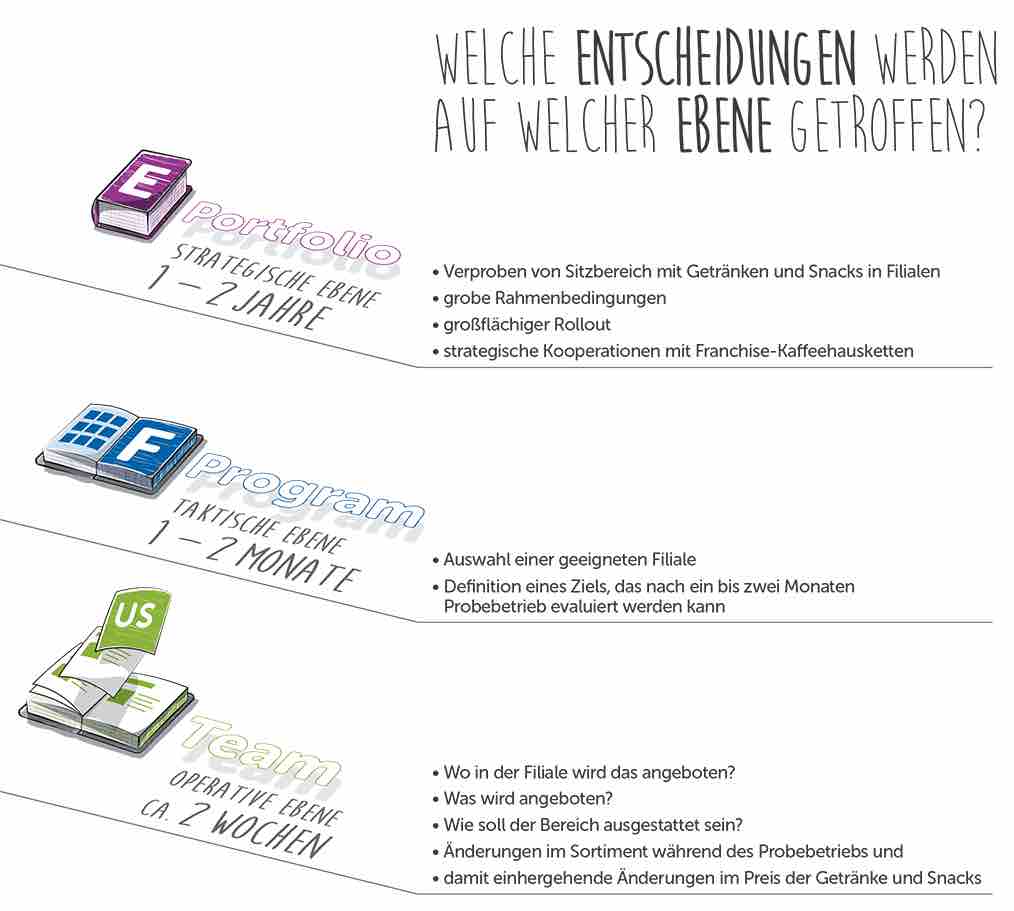Agile portfolio management means empowerment.
There is only one reason to organize companies in several levels: This connects the different planning horizons and cuts large strategic tasks into workable chunks and implements them.
Empowerment is necessary to make sense of this structuring. Those responsible at all levels should be empowered - on the basis of previous results or other foundations - to make decisions in order to steer the company.
In this context, empowerment also means that not every topic that is dealt with at team level has to contribute to a topic from strategic planning. This decentralization enables a quick and effective response to new topics and promotes flexibility and creativity close to the end customer. In line with agile principles, it is advisable to make transparent what authority the other levels have and what topics they are working on.
However, authorization alone is not enough. Those who are authorized to make decisions still need a basis for decision-making. This implies that teams can deliver product increments promptly, on the basis of which feedback can be obtained and planning can be adjusted. Agile values and principles such as early and regular delivery, openness and working to a beat enable companies to institutionalize this behaviour.
Shared decision-making powers make the company faster
Don Reinertsen assumes that only unusual decisions and those that have far-reaching consequences or above-average economies of scale should be made centrally. In contrast, regularly occurring and time-critical issues, as well as decisions that require specific or local information or technologies, should be made in a decentralized manner. The detailed design of a product is a typical example of the latter.
Let's illustrate this with an example. As part of a pilot project, a bookstore would like to provide its customers with a seating area where they can consume hot and cold drinks. The aim is to offer customers a more appealing shopping experience and invite them to linger in the store and browse.
You don't have to open a Starbucks branch in the bookstore to give customers the opportunity to drink coffee. If there is a Starbucks next to the bookstore, it may be enough to provide an area where customers can consume the drinks they have brought with them, set up seating and garbage cans there and hang a sign on the door saying that they can now take their coffee into the bookstore. If the employees realize after a month that the offer is not being used, it saves a lengthy store conversion.
If a conversation with customers reveals that they would like a slightly wider selection instead of the two types of tea on offer, a store employee goes out and fulfills this customer request - in order to evaluate two weeks later whether the wider range is popular. At the end of a medium cycle, the experiences made are summarized and a joint decision can be made on which product range to start with in the next branch where the concept is offered.

In organizations that give employees this kind of freedom to make decisions, there is faster feedback with the market. If employees had to approve every teabag, the good idea of the coffee corner would probably die a quiet death at some point on its way through the hierarchical chain of command. Employees would have no incentive to get involved and observe customer behavior in order to gather information for the final strategic decision on how the coffee corners should be designed and equipped in all stores. In this way, the company would deprive itself of an advantage.
Agile portfolio management therefore means setting a direction, but then also letting go of the reins. It requires top management to allow an open exchange with all decision-making levels and also to correct directions when the corresponding signals come from operational implementation. If you have the courage, you should give it a try!
This post is part of the Agile Portfolio Management series. The first post in this series is here -> Agile portfolio management
Note: This text is an article by Sebastian Schneider and Lothar Fischmann that we published on our website in 2018. As this topic is still very popular, we republished this article on our blog when we restructured our website.

Write a comment